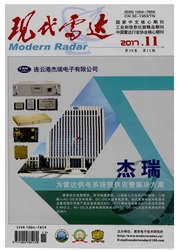

 中文摘要:
中文摘要:
在超宽带穿墙雷达压缩感知成像中,常常使用Rademacher序列作为模拟信息转换器的chipping序列。而这种序列的功率谱类似于高斯白噪声的功率谱,它与回波信号的功率谱不匹配,导致低速采样前信号的信噪比偏低,最终影响了成像效果。文章从低速采样前的平均信噪比最大化入手,构建设计匹配chipping序列的优化算法以导出其成立的条件,给出一种使用马尔科夫链游程长度受限(RLL)序列来设计匹配chipping序列的解决方案。仿真结果表明,使用马尔科夫链RLL序列设计匹配chipping序列的成像结果优于Rademacher序列,其图像的信噪比提高2~3dB。
 英文摘要:
英文摘要:
In the UWB through-the-wall radar imaging with compressed sensing, The Rademacher sequence is the chipping sequence of Analog-to-Information Conversion (AIC) in general. Its power spectrum is similar to the power spectrum of Gauss white noise, and mismatched with the power spectrum of receive signal. This will lead to a decrease in SNR before sampling at low speed, and then reduce the imaging quality. In this paper, a kind of sequence that the power spectrum is matched with the power spectral of received signal is designed from maximum of the signal to noise ratio before sampling at low speed. In addition, we show a design scheme of matching chipping sequence that is a Markov-generated Run-Length Limited (RLL) sequence. The results of simulations show that the through-the-wall imaging performance with the proposed sequence is better than traditional Rademacher sequence actually, and the signal-to-noise ratio of imaging improves about from 2dB to 3dB.
 同期刊论文项目
同期刊论文项目
 同项目期刊论文
同项目期刊论文
 期刊信息
期刊信息
